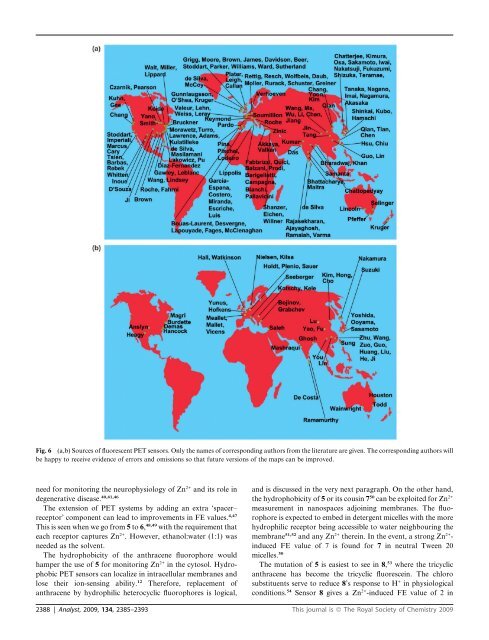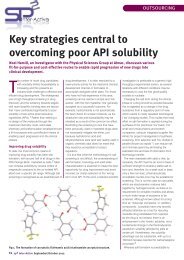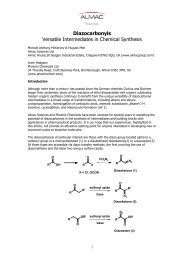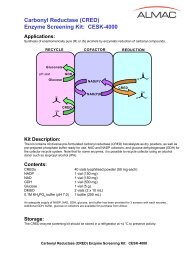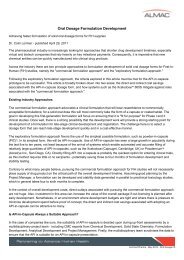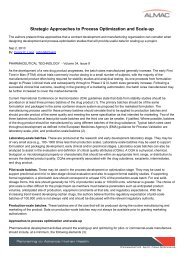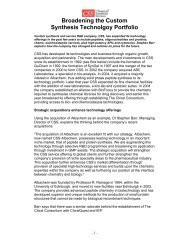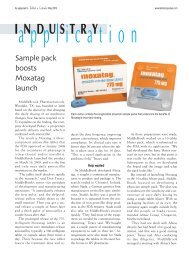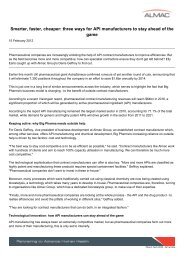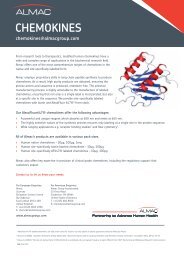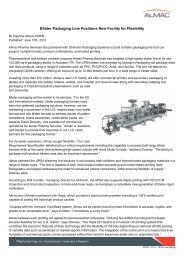Fluorescent PET (Photoinduced Electron Transfer) sensors ... - Almac
Fluorescent PET (Photoinduced Electron Transfer) sensors ... - Almac
Fluorescent PET (Photoinduced Electron Transfer) sensors ... - Almac
Create successful ePaper yourself
Turn your PDF publications into a flip-book with our unique Google optimized e-Paper software.
Fig. 6 (a,b) Sources of fluorescent <strong>PET</strong> <strong>sensors</strong>. Only the names of corresponding authors from the literature are given. The corresponding authors will<br />
be happy to receive evidence of errors and omissions so that future versions of the maps can be improved.<br />
need for monitoring the neurophysiology of Zn 2+ and its role in<br />
degenerative disease. 40,41,46<br />
The extension of <strong>PET</strong> systems by adding an extra ‘spacer–<br />
receptor’ component can lead to improvements in FE values. 4,47<br />
This is seen when we go from 5 to 6, 48,49 with the requirement that<br />
each receptor captures Zn 2+ . However, ethanol:water (1:1) was<br />
needed as the solvent.<br />
The hydrophobicity of the anthracene fluorophore would<br />
hamper the use of 5 for monitoring Zn 2+ in the cytosol. Hydrophobic<br />
<strong>PET</strong> <strong>sensors</strong> can localize in intracellular membranes and<br />
lose their ion-sensing ability. 12 Therefore, replacement of<br />
anthracene by hydrophilic heterocyclic fluorophores is logical,<br />
and is discussed in the very next paragraph. On the other hand,<br />
the hydrophobicity of 5 or its cousin 7 50 can be exploited for Zn 2+<br />
measurement in nanospaces adjoining membranes. The fluorophore<br />
is expected to embed in detergent micelles with the more<br />
hydrophilic receptor being accessible to water neighbouring the<br />
membrane 51,52 and any Zn 2+ therein. In the event, a strong Zn 2+ -<br />
induced FE value of 7 is found for 7 in neutral Tween 20<br />
micelles. 50<br />
The mutation of 5 is easiest to see in 8, 53 where the tricyclic<br />
anthracene has become the tricyclic fluorescein. The chloro<br />
substituents serve to reduce 8’s response to H + in physiological<br />
conditions. 54 Sensor 8 gives a Zn 2+ -induced FE value of 2 in<br />
2388 | Analyst, 2009, 134, 2385–2393 This journal is ª The Royal Society of Chemistry 2009


